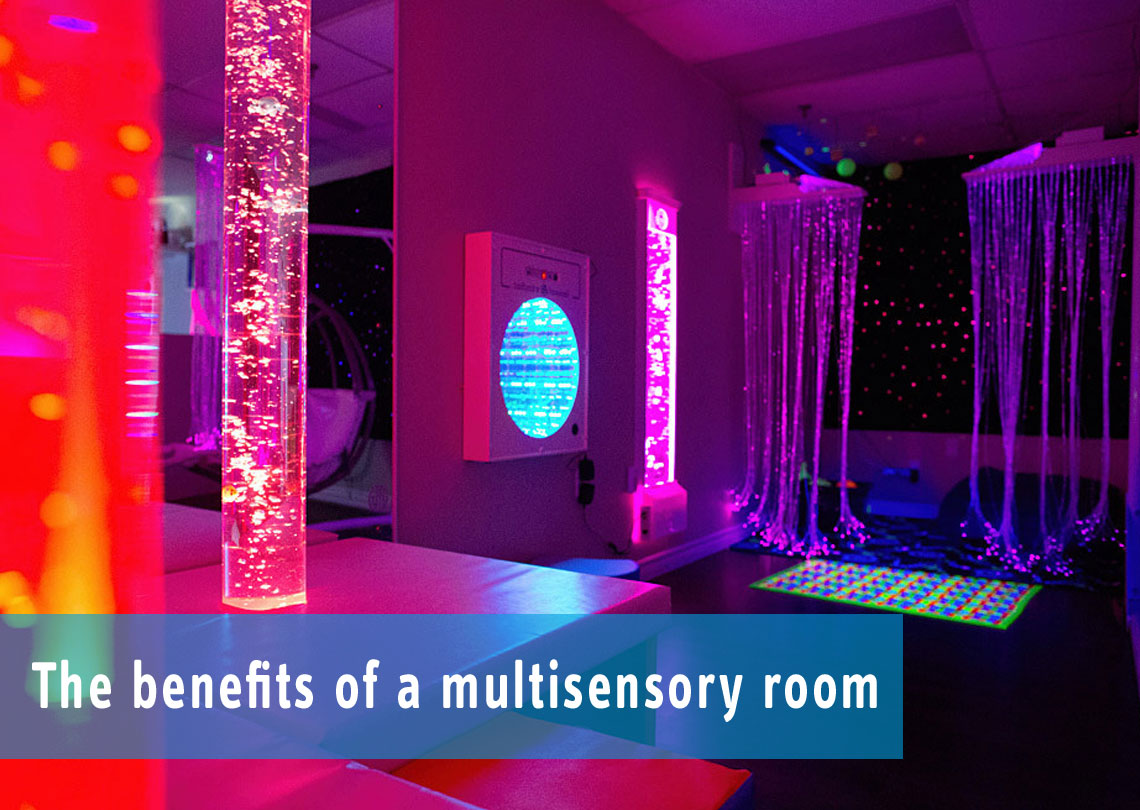The benefits of a multisensory room
May 10, 2018 | Brigitte Carrier

Sensory play has many unexpected benefits! It reinforces the brain’s nerve connections and promotes fine and gross motor skills, concentration, learning, socialising (sharing, waiting your turn) and communication with your peers. It prolongs the attention span, improves coordination as well as tactile, audio, visual and movement tolerance in a fun, non-threatening way. Furthermore it encourages emotional and language development. Finally, it can help children react appropriately to sensory stimulation (self-regulation).
At the beginning of the 1970’s, the “snoezelen” approach (from the Dutch snuffelen “smell” and doezelen “doze”) came about from the desire to offer sensory stimulations to people that were developmentally challenged, hyperactive, mentally handicapped or autistic, to promote and encourage communication and behavioral changes. This approach gave way to the creation of Multisensory Environments (MSE) around the world; spaces that use adapted modern technology and accommodates people of all ages with or without special needs. As a result, more and more daycare centers are creating such environments because they provide an escape for the little ones with no constraints, demands or judgement, and they can let their imagination run free, at their own pace as well as calm down and regulate their emotions and agitated behavior.
Some people are very sensitive to environmental stimuli and others don’t react to it enough. To meet the needs of everyone, the space must be both calming and stimulating and solicit several of the senses (including proprioceptive, which allows us to know the position of our body in space, and the vestibular, which affects balance and movement) or concentrate on one sense at a time, by varying the lighting, sounds and textures for example. With a warm person who creates a privileged and reassuring relationship, the user explores the material themselves or is invited to pay attention to a particular object.
What do we find in these spaces? Soft, thick carpets, tactile wall panels, bubble or luminous columns* which the user can control by varying the colours and light speed by pressing on the large buttons of a wireless contactor, floor or wall projections, light panels that react to sound, a light source and fibre optics that do not emit heat, vibrating cushions, a pool filled with luminous balls, a black light and luminescent accessories, a platform or cocoon swing, a scent diffuser, music or white noise, an aquarium and more.
If you do not have a dedicated space (at school, at daycare or at home for example) or if you’re looking for a more economical solution, it is possible to create a calming and secure space or one that is conducive to awakening the senses, with the help of a freestanding tent that opens up in seconds, a hoop that hangs from the ceiling where you can hang net fabric or a fabric tipi. You can then customize the space with various articles found in big-box stores, or even home-made items with a bit of ingenuity. Whatever solution you choose, you will provide a gentle and irresistible sanctuary to grow in harmony.
Brault & Bouthillier is proud to partner with TFH, a company that specialises in sensory spaces. Contact sales@bb.ca to plan your projects.
*Warning!Do not propose flashing or twinkling lights to people with photosensitivity.










Comments
There are no comments about this article.